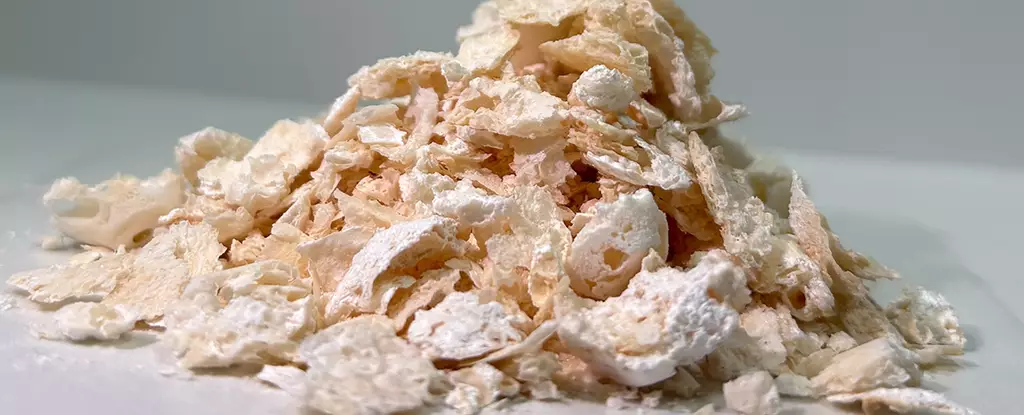In an era where environmental consciousness is more urgent than ever, the pursuit of sustainable plastic alternatives often feels like a well-intentioned but ultimately superficial effort. The recent advancements in producing pyridinedicarboxylic acid (PDCA) mark a significant scientific milestone, yet they also underscore our persistent struggle to genuinely reconcile plastic’s utility with environmental responsibility. While the new manufacturing techniques boast a remarkable increase in yield and a reduction of toxic waste, they do not fundamentally resolve the core dilemma: can biodegradable, bio-based plastics truly escape the shadow of environmental degradation that their petroleum-based counterparts cast?
The research from Kobe University highlights the potential of leveraging microbial metabolism to produce cleaner, more sustainable materials. However, the process itself remains tangled in complications—introducing new chemicals like pyruvate, which could complicate large-scale manufacturing and economics. These are not trivial concerns; they expose the persistent flaws in our approach to “green” innovation. It’s a reminder that scientific progress, no matter how promising, must be interrogated critically to determine if it can deliver meaningful change beyond laboratory settings.
The Mirage of Green Chemistry: Progress Meets Practical Limits
Advancements like the re-engineering of bacteria to synthesize PDCA reveal a fascinating intersection of biotechnology and materials science. But it’s crucial to recognize that such innovations often walk a tightrope between environmental benefit and practical feasibility. Replacing toxic byproducts with more benign intermediates is a step forward, but the introduction of pyruvate as a scavenger for harmful molecules exposes an uncomfortable truth: sustainable processes can come with their own hidden costs. This casts doubt on whether such methods can ever be scaled efficiently without offsetting their environmental gains or escalating costs significantly.
Furthermore, the manufacturing process’s dependency on sophisticated biological systems and chemical supplements poses questions about scalability and accessibility. Will these techniques remain the privilege of well-funded laboratories and industrial giants, or can they genuinely democratize sustainable plastic production? Without broad affordability and reliability, the promise of environmentally friendly plastics risks remaining a niche rather than a mainstream solution.
A False Hope or a Necessary Step? Judging the Sustainability Pathway
There’s no denying that innovations like PDCA and bacterial cellulose composites represent exciting, necessary steps in the broader quest for sustainable materials. Yet, they should not be viewed as ultimate solutions but as part of an ongoing evolutionary process. The hype surrounding “biodegradable plastics” often masks the reality that these materials still require energy for production, often involve complex biological systems, and may not fully biodegrade under real-world conditions.
Critically, the environmental impact of manufacturing these advanced bioplastics must be assessed holistically. From energy consumption in bioreactors to the environmental footprint of chemical additives like pyruvate, the true sustainability of such materials is debatable. At the same time, focusing solely on biodegradability risks overlooking systemic issues such as overconsumption, waste management infrastructure, and cultural attitudes toward plastic use.
It’s also worth pointing out that technological solutions are merely one facet of environmental responsibility. Policy, education, and systemic change remain indispensable. Relying heavily on scientific breakthroughs to solve environmental crises can lead to complacency or technological hubris, diverting attention from the urgent need to reduce overall plastic production and consumption.
The Road Ahead: Innovation with Intention and Skepticism
While the scientific strides made in improving PDCA production are commendable, they serve as a reminder that the path toward truly sustainable plastics is fraught with challenges. Progress should be welcomed but not uncritically embraced. Every innovation must be scrutinized for unintended consequences, scalability, cost, and actual environmental benefit.
Centers of hope must balance optimism with realism, recognizing that a radical overhaul of our plastic economy likely involves a multifaceted approach—combining sustainable materials with systemic waste reduction, circular economy principles, and responsible consumption. Scientific ingenuity is undeniably vital, but it must be paired with political will and societal commitment if we are to transform the environmental crisis associated with plastics from an intractable problem into manageable change.
Ultimately, the path toward environmentally responsible plastics necessitates humility, skepticism, and a willingness to challenge assumptions. While new methods for producing biodegradable monomers like PDCA mark an important evolutionary step, they are far from the definitive solution. Only through a comprehensive, critically engaged approach can we hope to truly redefine plastics for a sustainable future.


Leave a Reply